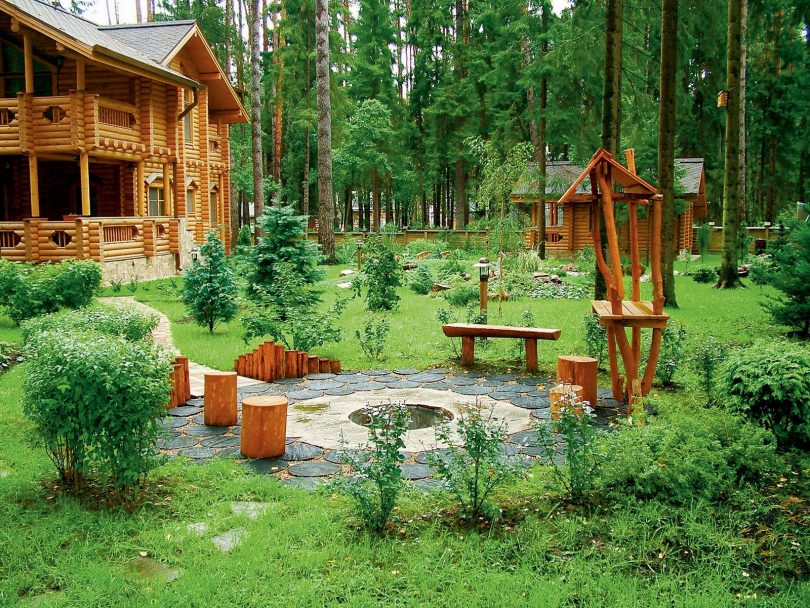In todays world, more people are looking to create a sustainable lifestyle. Many homestead dreamers are intrigued by the idea of an eco restoration 15 acre homestead. This concept involves transforming a piece of land into a self-sustaining, environmentally-friendly haven. It is not only about living off the land but also about giving back to nature and ensuring that the environment thrives.
Creating an eco restoration 15 acre homestead requires dedication, knowledge, and a commitment to preserving nature. This article will guide you through the process, offering insights into key practices, challenges, and rewards associated with homesteading.

Understanding Eco Restoration
Before diving into the practical aspects, its essential to understand what eco restoration means. It involves rehabilitating land to its natural state, which may have been affected by agriculture, construction, or other human activities. This restoration process is vital for maintaining biodiversity, improving soil health, and stabilizing the ecosystem.
Benefits of Eco Restoration
There are numerous benefits to restoring land. These include enhanced biodiversity, improved water quality, and increased resilience to climate change. Restoring an area can also provide a habitat for native species, which in turn supports local ecosystems.
Planning Your 15 Acre Homestead
Planning is a crucial step in developing a successful 15 acre homestead. Its important to assess the land, identify its strengths and weaknesses, and develop a plan that aligns with your goals. Consider factors such as soil quality, water sources, and climate conditions.
Designing the Layout
Designing the layout of your homestead is essential. A well-thought-out design can enhance efficiency and sustainability. Integrate features like rainwater harvesting and solar power into your plan. For more ideas, you can check out this [15 acre homestead layout](https://thetinylife.com/fifteen-acre-homestead-layout/).
Soil Management and Crop Selection
Healthy soil is the foundation of a successful homestead. Implementing sustainable soil management practices is vital. This includes composting, crop rotation, and using natural fertilizers. Selecting the right crops that suit your climate and soil type is also important.
Composting Techniques
Composting is an effective way to recycle organic waste and enrich the soil. It reduces waste and provides essential nutrients to your crops. Learn more about reducing waste on your homestead [here](https://15acrehomestead.com/how-to-reduce-waste-and-save-money-on-your-homestead/).
Water Management
Water is a precious resource, and managing it efficiently is crucial for any homestead. Implementing rainwater harvesting systems can provide a sustainable water supply for your plants and animals. Explore more about rainwater harvesting on our sustainability journey [here](https://15acrehomestead.com/rainwater-harvesting-solar-power-and-more-our-sustainability-journey/).
Efficient Irrigation Techniques
Using efficient irrigation techniques such as drip irrigation can significantly reduce water usage while ensuring your crops are well-watered.
Creating a Self-Sustaining Ecosystem
One of the main goals of an eco restoration 15 acre homestead is to create a self-sustaining ecosystem. This involves integrating various elements like plants, animals, and humans in a way that each supports the other.
Livestock Management
Caring for livestock is an integral part of homesteading. It requires knowledge and dedication to manage them efficiently. Discover lessons from managing livestock on our 15 acres [here](https://15acrehomestead.com/caring-for-livestock-year-round-lessons-from-our-15-acres/).
Harnessing Renewable Energy
Embracing renewable energy sources is essential for reducing the ecological footprint of your homestead. Solar panels and wind turbines can provide sustainable energy solutions.
Solar Power Systems
Solar power systems are an excellent way to harness the suns energy. They are cost-effective and environmentally friendly, making them ideal for any homestead.
Community Involvement and Education
Community involvement is crucial for the success of your homestead. Educating others about sustainable practices can foster a sense of community and encourage others to adopt eco-friendly habits.
Workshops and Training
Organizing workshops and training sessions can help spread knowledge and skills necessary for sustainable living.
Conclusion
Embarking on the journey of an eco restoration 15 acre homestead is a rewarding experience. It involves dedication, planning, and a commitment to sustainability. By understanding the principles of eco restoration and implementing sustainable practices, you can create a thriving, self-sustaining homestead that benefits both you and the environment.

Frequently Asked Questions
What is eco restoration?
Eco restoration involves returning land to its natural state, enhancing biodiversity, and stabilizing ecosystems.
How do I start an eco restoration project on my land?
Begin by assessing your land, planning your layout, and implementing sustainable practices like composting and rainwater harvesting.
Can I incorporate livestock into my eco restoration homestead?
Yes, livestock can be an integral part of your homestead, providing benefits such as natural fertilization and land management.





